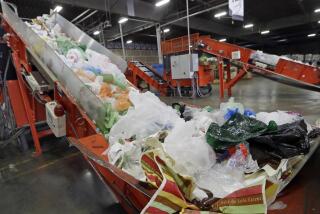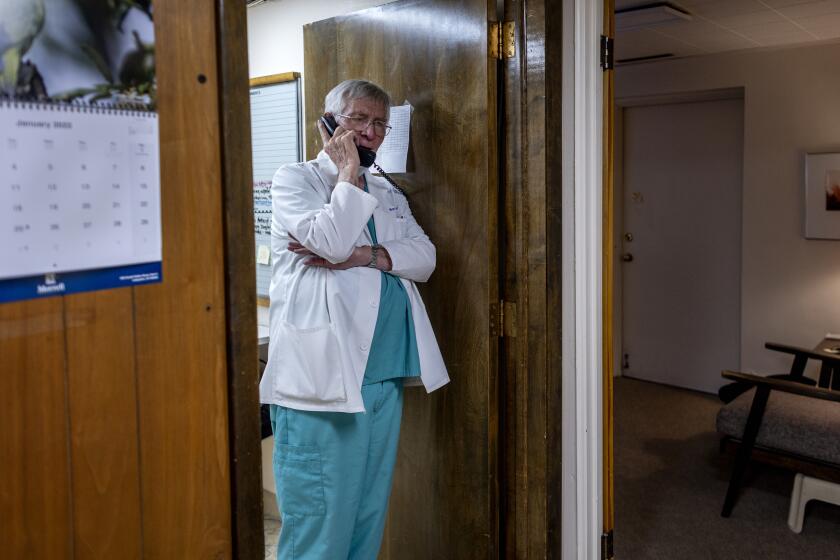Letters: The past and future of plastic
Re “L.A.’s got a brand new bag ban,” Jan. 1, and “Bring your own (reusable) bag,” Editorial, Dec. 31
It’s about time Los Angeles eliminated the use of disposable plastic bags, but I hope this is only one part of a larger effort to cut back on plastics.
We are rightly motivated to reduce the number of these environment-poisoning products because of plastic blight. At the same time, we should look how these bags are made.
Petrochemicals are a major ingredient in the manufacture of plastics. A carbon tax would inevitably increase the cost of manufacturing plastics and would perhaps make plastic more valuable and less ubiquitous.
It might reduce the amount of plastic stuff we mindlessly toss out the car window or otherwise throw away.
Peggy Painton
Los Angeles
L.A.’s bag ban is finally here, and most of us are happy with it.
A strong, reusable and washable shopping bag can be made quickly with a T-shirt and a pair of scissors. Just cut off the sleeves and cut out the neck band. To close up the bottom, tie it off with the neck band or sew it shut.
But there are still people who claim we are taking their “freedom of choice” away. The solution is to use the program implemented in 2002 in Ireland, where a 33-U.S.-cent fee per bag cut usage by more than 90% within weeks.
By imposing a similar fee here, our “freedom of choice” could be preserved while dramatically reducing plastic bag usage.
Diana Dixon-Davis
Chatsworth
The Times’ editorial says that Americans “use” 2.5 million plastic bottles every hour. Many of these are single-use water bottles, and the editorial suggests that some of this waste could be mitigated by a proliferation of “well maintained” water fountains.
Fine, but who’s going to drink the water coming out of them? According to the Natural Resources Defense Council, more than half of all Americans drink bottled water, and about a third of the public consumes it regularly, even though nobody should assume that water in a bottle (up to 40% coming from municipal water supplies) is necessarily any better than tap water.
Image is everything. So before multiplying drinking fountains, public perceptions need to be changed. How to do that? Turn over management of the nation’s drinking water to Coca-Cola and Pepsi.
Terry De Wolfe
Monterey Park
ALSO:
Letters: ‘Elites’ vs. religious belief
Letters: A worthy party place downtown
Letters: Everyone dies. So let’s talk about it.
More to Read
A cure for the common opinion
Get thought-provoking perspectives with our weekly newsletter.
You may occasionally receive promotional content from the Los Angeles Times.










